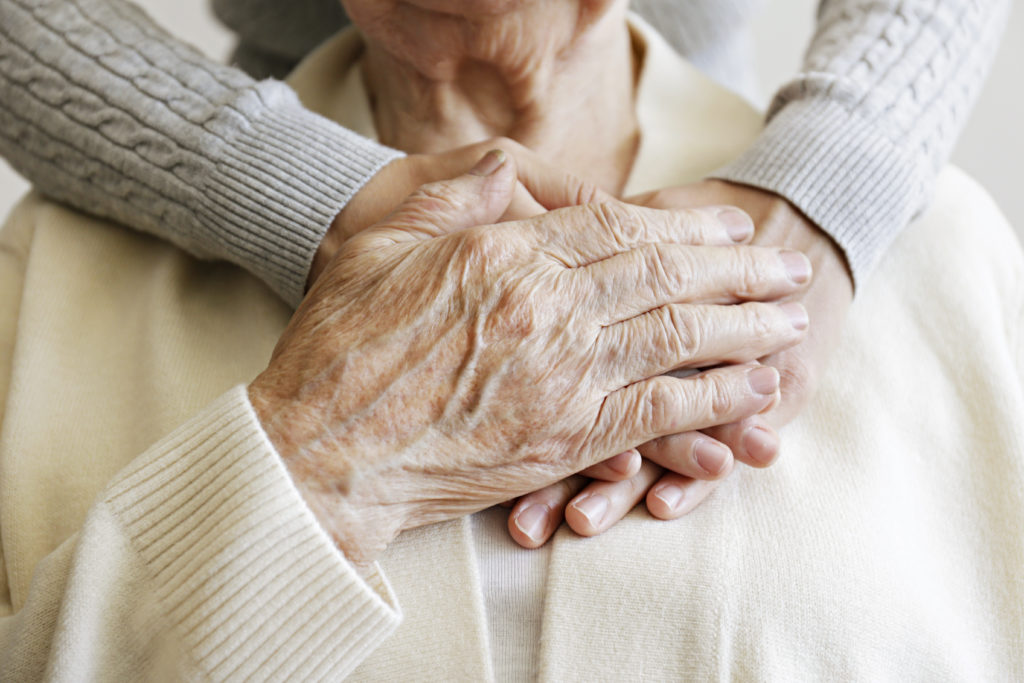By Sarah Ruttle, Director of Communications
Published: Dec 21, 2021
“Even though it’s a sad experience, it’s always been an experience of honor and respect.”
When Lois showed the first signs of early Parkinson’s Disease, their son Danny and his siblings agreed they wanted to help their parents stay in their home as long as they could. He shares that some days were very difficult and some months – even years – felt very long. Despite the challenges, it was rewarding for them to see their mom Lois and dad Bob stay together in their home into their 90s.
When their needs became too complicated to meet at home, the family sought the help of Kansas City Hospice to arrange their move to Kansas City Hospice House (KCHH). They had one request – a first in KCHH’s 15-year history – “we wanted to have our parents here together” Danny shares. The siblings requested a larger room that could accommodate two beds and asked that they be arranged close enough for their parents to hold hands with each other in their final days.

The power of touch
Human touch has been shown to be a powerful force in providing comfort, calm and reassurance to others. It’s a way to communicate our emotions, from a pat on the back to proudly recognize an accomplishment, to the grip between an aging couple who has shared a lifetime of love with each other. The need for human touch among patients and their families is something increasingly recognized in hospice and palliative care, and something that became painfully more apparent during the most isolating moments of the pandemic.
The power of touch can be easily overlooked, especially as we age and lead increasingly busy and more individualistic lives. The importance of early touch, sound and other sensory stimulation for newborn babies as they begin life is widely recognized. Often overlooked, is how critical this same sensory experience becomes to providing comfort and peace to someone in the last stages of life.
There has long been an awareness among clinical hospice and palliative care staff of the importance of respectful touch, as they move patients and provide them with personal cares such as bathing or brushing their hair. There is a growing recognition among providers of the benefits of therapeutic touch, which research shows can decrease pain and anxiety, improve symptoms of sleeplessness and fatigue, and increase quality of life for palliative patients. Even when physical pain is well-controlled, hospice patients often experience agitation and anxiety. It can be difficult to communicate what they are experiencing, including feelings of uncertainty about what is to come.

Healing through compassion
To help ease these distressing emotional experiences, Kansas City Hospice enlists the services of expressive therapists who use the healing and calming power of music, art, touch and other sensory experiences to help people find calm and ease their anxieties. Even after 40+ years as a hospice provider, the seemingly simple request of one family to grant their parents the ability to hold hands as they lived their final days just as they had lived their lives, close to each other, reminds us how powerful the human touch can be.
Skill and compassion are both cornerstones of hospice and palliative care. Compassion can mean a lot of things and for Lois, Bob and their family, it meant taking extra steps to look closely at the Standards of Practice rules and doing everything we could to meet their request. Not only did it make this family feel respected, it was a fulfilling moment for our staff who were able to help honor their life.
The ability of Kansas City Hospice & Palliative Care to provide specialized care, adapt to the unique needs of patients at the end of life, and meet special requests of families like the Bears would not be possible without the generosity of our donors. To learn more about Lois and Bob’s story and make a donation to support other families like theirs, please visit KCHospice.org/Powerof Touch.
You can read the original version of this article in the November/December edition of Healthy Kansas City.
Posted in General, Stories of Support
